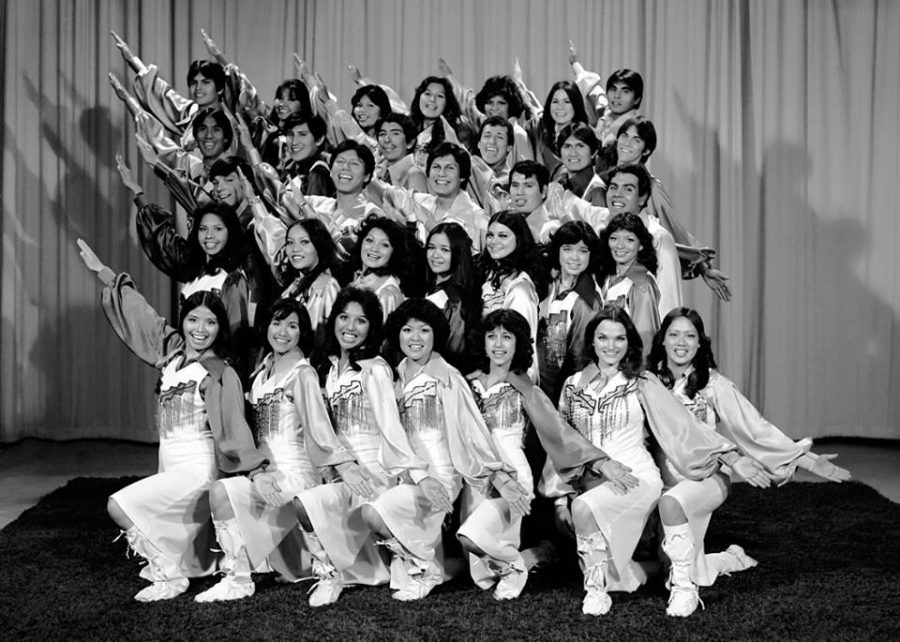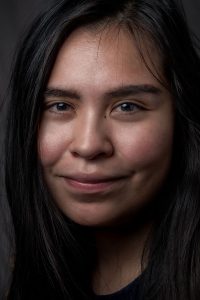In the second and final part of this series, we are looking back at the history of the Church of Jesus Christ of Latter-day Saints that has involved or depicted Indigenous communities in Church-sponsored cultural campaigns.
These examples include a musical group from Brigham Young University, an account from a former missionary serving on a tribal reservation who later participated as a foster mother in the Church’s Indian Placement Program and brief thoughts on Indigenous depictions from a U student growing up in the Church.
The Lamanite Generation
“We are very proud to present to you a song that has come to mean a great deal to the Indian people,” a doting female announcer said. “It was written by two students at BYU.” The song is called “Go My Son.”
Gentle tom-tom drum beats create the background of this song’s story, indicative of sound heard in films when the tribe shows up. The announcer tells a story. “Long ago, an Indian war-chief counseled his people in the way they should walk.” That way is through education and the “ladder to success and happiness.” Finally, it arrives at the thesis of its song.
“Go my son and climb that ladder,” the group begins to sing, incorporating a dance that alludes to familiar sharp gestures discovered in another song called Book of Mormon Stories — a well-known Church primary hymn where children sing about “the Lamanites in ancient history.”
This group was called The Lamanite Generation. Officially started in 1971 at BYU, they experienced instant popularity. Their presence was found in LDS Church households — eventually sweeping into many schools and Church programs in the Mountain West.
During the late 20th century, alongside Spencer W. Kimball’s Lamanite discourse, the aim of the BYU musical group was to display the rich diversity of Indigenous cultures from an LDS Church lens, perhaps convincing an audience of their “true” divine origins.
The name eventually was changed to Living Legends, around 1991. Sunshine Wonacott is a former member. She described the goal of the group as “sharing that culture and sharing the beauty and the dancing — maybe a little bit of awareness.”
According to BYU’s description of Living Legends, it “pays tribute to ancient cultures of the Americas and the Pacific with music and dance performed by talented descendants of these cultures.”
Sharing Navajo and Pacific Islander heritage, Wonacott spent the late 1990s participating in the Native American section of the group’s performances. Other members of the group represented the Pacific Islands and Latin America. She mainly performed pan-native dances such as jingle dance and fancy shawl, popular female styles featured at pow-wows, a type of Native American gathering. Wonacott said Living Legends tried to make it as authentic as possible to represent all of the cultures in the performance.
The group traveled domestically and across countries. Wonacott said her group traveled abroad to Scandinavian countries and, while performing at a fireside in Denmark one day, she said her testimony became stronger.
Looking back, Wonacott doesn’t regret her experiences. As a Native and active member of the Church, she doesn’t have any strong feelings towards the group and their earlier efforts. “I think the Church has a good influence on me. I think my culture has been an influence on me,” she said.
Living Legends still continues today.
From a Former Missionary Serving on a Reservation
Throughout her entire life, Joy Bosso has been a faithful member of the LDS Church. During the late 1960s, she served a mission in North Dakota and Minnesota. While in Minnesota, she resided on one of the Chippewa reservations participating in door-to-door efforts to encourage tribal citizens to join the Church.
Bosso said that while teaching them about the Book of Mormon, “Many people knew the truthfulness before we even said it,” and explained that their ancestors passed the knowledge about their heritage origins down to them.
During her mission, Bosso recalled teaching them “that the Native American Indians were descendants.” She said at the time they weren’t referred to as Native Americans, but as either “Lamanites” or “Indians.”
When asked if the term “Lamanites” held any positive or negative connotations, Bosso said, “It wasn’t meant to be a derogatory term.” Her husband, a Native Hawaiian, is fine with being described as one. Regardless, she’s displeased with modern divisions of racial categories and instead prefers to be identified as “American” instead.
“It was a Privilege:” A Vignette of Fostering a Child in the Indian Placement Program
Bosso also fostered a child during the Placement Program — a Navajo girl who took dancing and piano lessons under Bosso’s household. “She had incredible experiences she would never have on the reservation,” Bosso said.
Bosso doesn’t keep in touch with her foster daughter but remembers she grew up to become a nurse.
She vehemently disagrees the children have been ripped away from their families’ and tribes’ culture. “It’s not like [we] round them up and [take away their] freedom of choice. This is something that they were desirable of doing,” Bosso said. “It was a privilege.”
Bosso described the process of Native families, mainly Navajo, applying for their children to join the Church’s Placement Program.
Bosso said during her time fostering the child, the reservation was in undue stress from extreme poverty. Tribal law scholars argue that the poverty of the 1970s is due to a series of Federal policies passed in favor of eliminating Native lands to better facilitate assimilation into mainstream American living. This was known as the “Termination Era” in tribal legal history.
Although the Placement Program formally ended, during that time it forged a radically new identity for Native children who later understood what it meant to grow up in a household with people who believed in a doctrine that emphasized their community more than any other sect of Christianity.
Conclusion
All these stories constellate into the broader history of our country’s rhetoric of race and religion, often delving into difficult yet productive dialogues about our world and communities.
Will Thompson approached these dynamics as a fifteen-year-old and believed that becoming an inactive Church member was the best response. Currently a graduate student at the U, Thompson’s degree is in political science.
Thompson said the Church “portrayed that we were doing a great service to the Lamanites by teaching them their true history.” Growing up in California and Utah LDS wards, Thompson eventually attended BYU for his undergraduate studies before transferring to the U.
He says his testimony quickly wilted when he read an argument drawing close comparisons between the Book of Mormon and the View of the Hebrews, which both explained how Indigenous People originated from Israel. “Apparently, Jeff Smith was quite enamored [with] the story, and that that sort of informed the writing of the Book of Mormon,” he said.
Although Thompson is confident he doesn’t have any plans on returning to the Church, he continues an ongoing exploration alongside our subjects of this series. They can all agree — faith can be complicated.
The first part of this series can be found here. This article is part of the Poynter College Media Project. Click here for more stories and information on the topic “Are U Mormon?”




Randy (a proud UofU alumnus) • Mar 18, 2019 at 4:43 pm
My family fostered a child from the Apache reservation in White River, AZ. We never considered the idea of suppressing his cultural identity. My parents gave him love and support in everything he strove for, just as they did for me.
His name was Virgil, and while we had our challenges, as most siblings do, we got along rather well. If anything, I think he thought of me as the more underpriveledged one in the family. He taught us of his life on the reservation. And, while often shy, and reticent to really open up about things that were very personal to him (for example, the origin of the paired scars at the corners of his eyes… presumably ritual markings, but he never confirmed or discussed thier origin), he was a fully integrated member of the family. His mother and sister even visited and stayed at our house.
We didn’t refer to Virgil as a “Lamanite,” either. He was proud to be an Apache. To us, he was Virgil… to me, my brother.
Eventually, he returned to the reservation, and after a time, got married. While I never saw them again, Virgil met with our father (he traveled frequently for work, so stopped in to see Virgil when he could). Unfortunately, the reservation can be a violent place, and he was pushed off of a bridge not long after he got married, which is very sad. He was an amzaing athlete, and an even more amazing artist…. Naturally gifted at both.
I don’t think he sufferred any by coming to live with us.
Joy Basso • Mar 11, 2019 at 9:06 pm
It is my belief that, rather than having “forged a radically new identity for Native children,” the Placement Program and most of the foster parents who participated in it, desired to celebrate and enhance the students’ native “identity” and give them a broader range of choices to explore. The beloved “foster daughter” I cared for was part of the great Sioux Nation in South Dakota. My experiences were with the Sioux, Chippewa, Winnebago and Omaha tribes in South Dakota, Minnesota and Nebraska. After volunteering among the Native Americans for 18 months, I returned home with a deep love for the people I served. In our senior years, we have enhanced our love for all of Heavenly Father’s children by serving in South Africa for two years. In both missions, the desire was to share the blessings and joy that can come from embracing the gospel of Jesus Christ.
The efforts on this topic by Miacel Spotted Elk are appreciated. Joy Basso